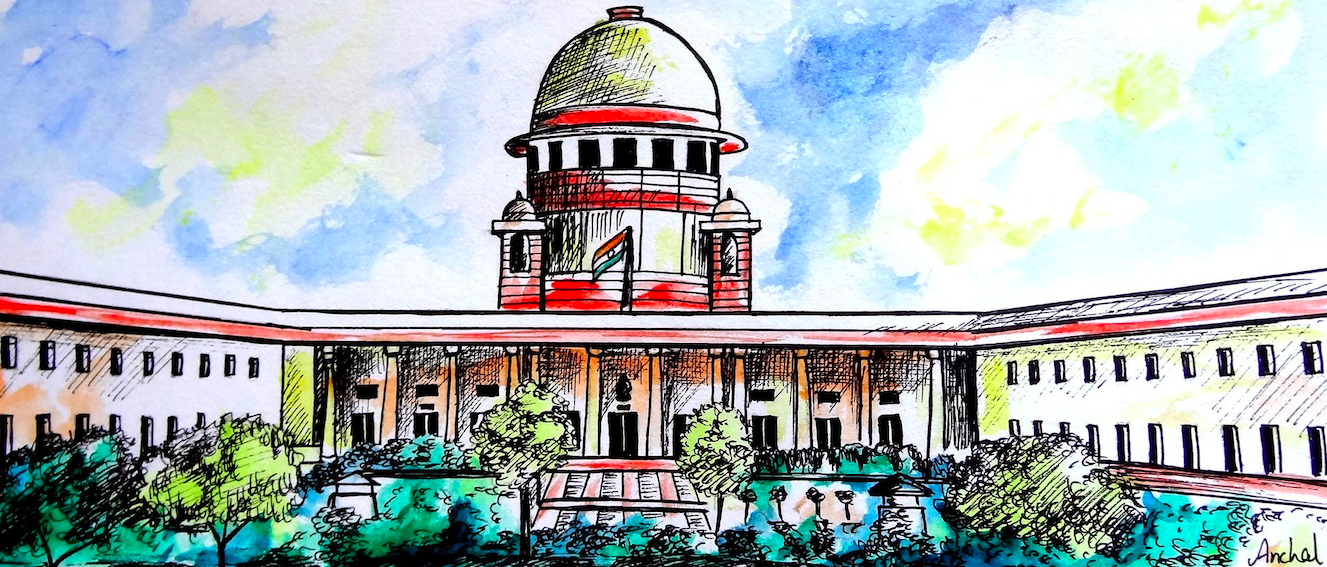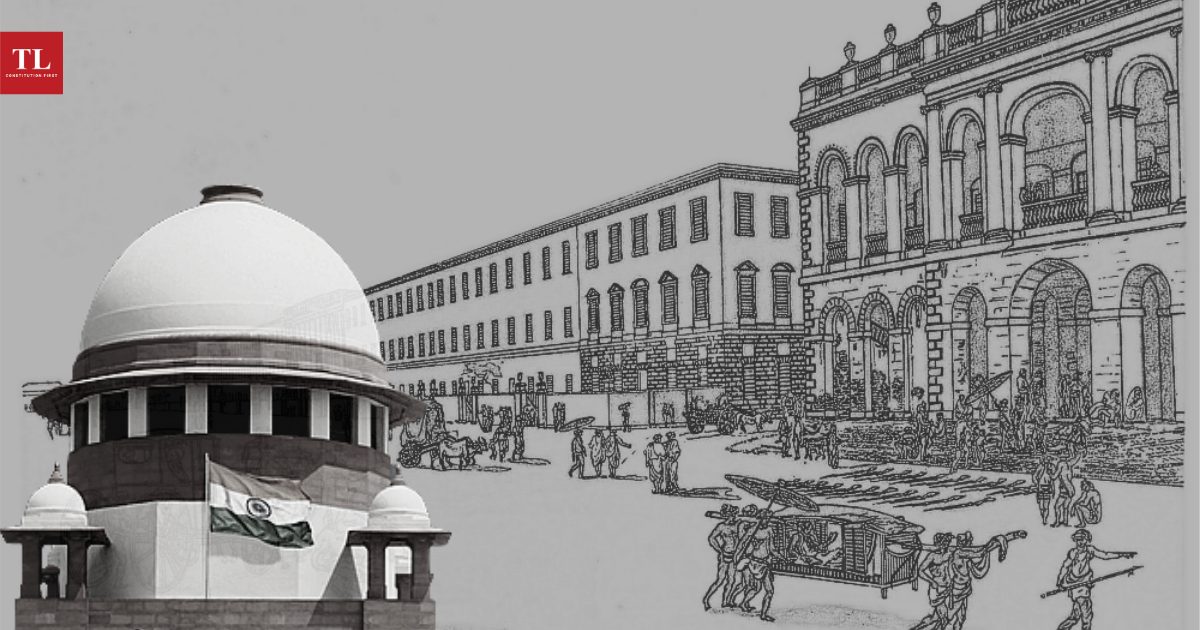The Supreme Court of India is the highest constitutional court and the final court of appeal. It has been given extensive jurisdiction to allow it to carry out its sacred duties. The Court considers appeals from subordinate court orders, interprets and upholds the Constitution, preserves and protects people’ basic rights, and settles inter-state conflicts.
The Supreme Court’s origins may be traced back to the Government of India Act of 1935. The Act established the Federal Court, which was in charge of resolving conflicts between federal states and provinces. In addition, the Federal Court was given the authority to hear appeals from the higher courts.
The Supreme Court’s jurisdiction and powers are comparable to those of the Federal Court. The Supreme Court is established by Article 124 of the Indian Constitution. The Supreme Court of India was established on January 28, 1950, and the first judge to preside over it was the Hon’ble Mr. Justice Harilal Jekisundas Kania.

Original Jurisdiction of Supreme Court
Original jurisdiction is the court’s authority to hear and decide a case as the court of first instance.
Article 131 of the Indian Constitution defines the Apex Court’s original jurisdiction. It states that the Court will have the authority to exercise original jurisdiction:
- In disputes between the Union Government and one or more States
- In such disputes, where the Union Government and one or more states constitute one party and one or more states constitute the other party
- In disputes between two or more states
Disputes under this Article must include a relevant question of legal right. No other court has the authority to hear the disputes contemplated by this Article. The objective of the Constitution’s framers in granting the Apex Court so broad authority was to ensure that such conflicts be resolved once and for all at the highest federal court.
Furthermore, the phrasing of Article 131 suggests that it must be read in conjunction with and “subject” to other Constitutional provisions. Thus, the initial power granted by Article 131 can be restricted by other constitutional provisions, such as those governing the management and distribution of inter-state river flows (Article 260) or Presidential recommendations to the Finance Commission (Article 280).
Writ Jurisdiction of Supreme Court
Furthermore, the Court has original jurisdiction in cases involving the enforcement of individuals’ fundamental rights. In the event of a breach of basic rights, any individual may petition the Supreme Court, and the Court may issue writs to grant the proper remedy. The notion of Writs was inherited by India from the British legal system, which allows courts to issue Prerogative Writs. Article 32 states that the Court may issue the following orders to enforce fundamental rights:
- Habeas Corpus: Writ requiring the detainee’s presence before the Court to determine whether the detention is valid or illegal. Because of the effect of the 44th Constitutional Amendment, which states that Article 21 cannot be suspended even during a declaration of emergency, the writ of Habeas Corpus can be issued properly during an emergency as well.
- Quo warranto: A court issues this writ to a public official, requesting him to explain the authority for his acts. The public official must demonstrate the authority under which he holds the office and exercises the functions of the office. Normally, this writ is issued against executive officials who hold public office.
- Mandamus: The Court issues a writ of Mandamus to order a public officer to continue performing his public duties. This writ cannot be issued against a private individual, a high court chief justice, the President of India, or the Governor of any state.
- Prohibition: This writ is issued by the Court to prevent a subordinate court from exceeding or usurping its jurisdiction, or from operating illegally. This writ is issued when a lower court decides to try a case that is outside its jurisdiction.
- Certiorari: When the Subordinate Court determines a case beyond its jurisdiction or in violation of natural justice principles, the Court has the authority to issue a writ of certiorari, effectively setting aside or quashing the erroneous judgement.
Article 139A states that when a case involving a significant issue of law is pending before the Apex Court as well as any High Court, or when such a matter is ongoing before two or more High Courts, the Apex Court has the authority to withdraw the subject from the High Court and determine it on its own.

Advisory Jurisdiction of Supreme Court
The Apex Court has advisory authority under Article 143. The President may request an advisory opinion from the Supreme Court on any point of law or fact that is of public interest and where the President believes that getting such an opinion is expedient.
The advisory jurisdiction, like the original jurisdiction, derives from the Government of India Act, 1935. The Federal Court has advisory power under Section 213(1) of the Government of India Act, 1935. Article 143 of the Constitution incorporates the core of this Section.
It is important to remember that the Court’s authority under Article 143 is simply advisory and does not bind the President or the Government. The Court does not issue orders or judgments, but rather provides the President with its opinion on the subject topic.
Appellate Jurisdiction of Supreme Court
Articles 132 and 133 establish the Supreme Court’s appellate authority. The Supreme Court may hear an appeal against a High Court’s “judgement, decree, or final order” if the High Court certifies that the subject raises a “substantial question of law.”
In criminal cases, an appeal can be filed before the Supreme Court if the High Court agrees, by a certificate, that the case should be heard by the Supreme Court. It is important to remember that if a review is desired based on the High Court’s certificate, it is up to the Supreme Court to decide whether or not to grant the review petition.
Review Jurisdiction of Supreme Court
The Supreme Court has review authority under Article 137 of the Constitution. According to this Article, the Supreme Court has the authority to review its own decisions and orders. Part VIII Order XL of the Supreme Court Rules, 1966, also provides for review jurisdiction.
A review application can be filed with the Supreme Court within 30 days following the relevant verdict. Furthermore, the application must be certified by an Advocate on Record.
Powers of Supreme Court
- The Supreme Court has the authority to interpret the Constitution, and its decision is binding.
- The Supreme Court has judicial review authority. It has the authority to review legislation approved by the Legislature and declare them null and unconstitutional if they are deemed to violate fundamental rights or any other provision of the Constitution.
- The Apex Court guarantees that people’ fundamental rights are not violated and can also issue writs for fundamental rights enforcement.
- The Court has the authority to penalise people who refuse to obey its directives or make scandalous and insulting statements about the Court. Article 129 provides for the Apex Court’s ability to penalise for contempt.

Conclusion
The Supreme Court is the highest court in India. It has broad authority and is charged for upholding the rule of law in the country and reining in the plethora of the legislative and government. It is apparent that the Supreme Court was given the same jurisdiction as the Federal Court and the Privy Council. Parliament has the authority to broaden the Court’s jurisdiction even further. However, no Act of Parliament can restrict or reduce the Court’s inherent authority.
Other related posts:
INDIAN CONSTITUTION : A LIVING DOCUMENT
COUNCIL OF MINISTERS ENJOYING PRESIDENTIAL POWERS
PARLIAMENTARY PRIVILEGES IN INDIA

